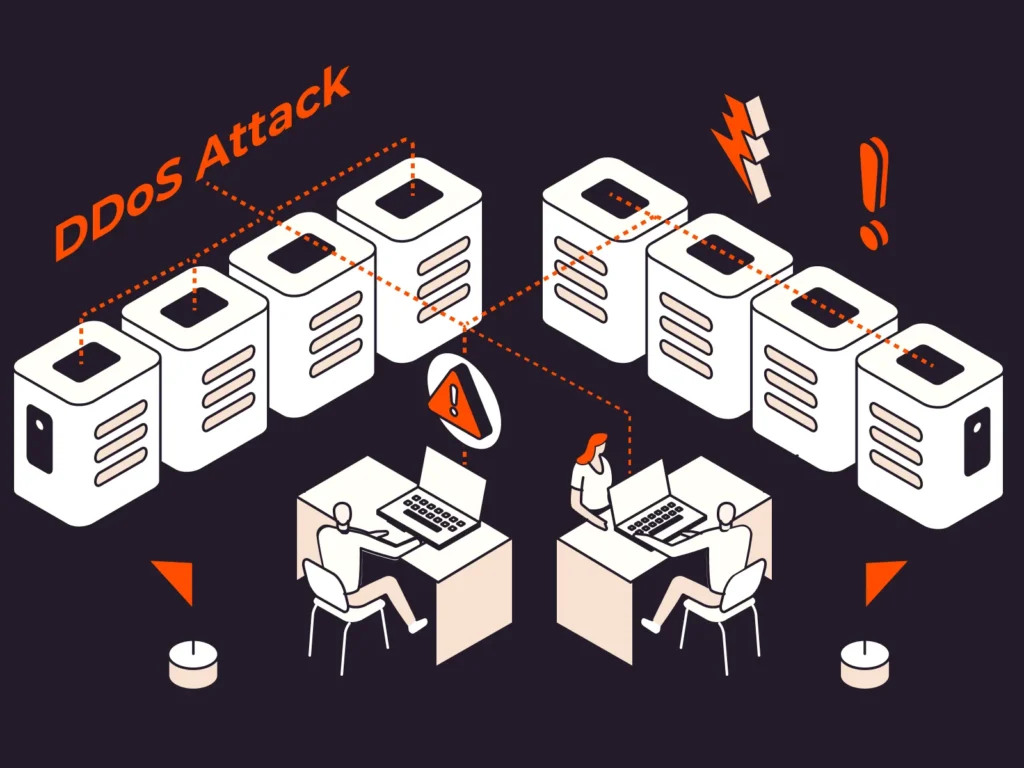Understanding DDoS Attacks: An Overview

Distributed Denial of Service (DDoS) attacks represent a significant threat in the cybersecurity landscape. At their core, DDoS attacks aim to overwhelm a targeted system, network, or service with a flood of internet traffic, rendering it unavailable to legitimate users. This is achieved by utilizing multiple compromised computer systems as sources of attack traffic. These systems can include computers and other networked resources, such as Internet of Things (IoT) devices.
DDoS attacks are categorized into three primary types: volumetric attacks, protocol attacks, and application layer attacks. Volumetric attacks generate massive amounts of traffic to saturate the bandwidth of the target network or service. This type of attack often involves techniques like UDP floods and ICMP floods. Protocol attacks, on the other hand, exploit weaknesses in network protocols to exhaust server resources. Common examples include SYN floods and fragmented packet attacks. Finally, application layer attacks focus on specific applications or services, targeting the layer where web pages are generated and delivered to users. These attacks, such as HTTP floods, can be particularly difficult to detect as they mimic legitimate user traffic.
The motivations behind DDoS attacks vary widely. Some attackers aim for financial gain, engaging in extortion by threatening prolonged service disruptions unless a ransom is paid. Others may be driven by ideological beliefs, seeking to disrupt services for political or social reasons. Competitors may also use DDoS attacks to damage the reputation and operations of rival businesses.
The impact of DDoS attacks on businesses and services can be substantial. Financial losses can accumulate from downtime, lost revenue, and the costs associated with mitigating the attack. Furthermore, businesses may suffer reputational damage as customers and partners lose confidence in the organization’s ability to maintain secure and reliable services. Service disruptions can also lead to a loss of customer trust and long-term business relationships, exacerbating the overall impact.
Identifying Vulnerabilities and Preparing for DDoS Attacks
In the contemporary digital landscape, identifying vulnerabilities within an organization’s network and infrastructure is paramount for effective DDoS mitigation. Understanding these weak points aids in formulating a robust defense strategy against potential threats. The initial step involves conducting a thorough vulnerability assessment. This process includes scanning the network for exploitable weaknesses, evaluating the security posture of systems, and identifying points where the network could be susceptible to a Distributed Denial of Service (DDoS) attack.
Risk management plays a crucial role in this context. Organizations must prioritize their assets based on the potential impact of a DDoS attack. By categorizing assets and assigning risk levels, businesses can focus their resources on protecting the most critical components of their infrastructure. This approach ensures that the mitigation efforts are both effective and efficient.
Developing a comprehensive DDoS response plan is another critical aspect. This plan should detail the specific steps to be taken before, during, and after a DDoS attack. It includes defining roles and responsibilities, setting up incident response teams, and establishing communication protocols. The response plan should be regularly reviewed and updated to address new threats and vulnerabilities.
Employee training and awareness are also indispensable in recognizing early signs of a DDoS attack. Regular training sessions can help employees understand how to detect unusual network behavior and the importance of promptly reporting such anomalies. Awareness programs should educate employees about the various types of DDoS attacks and their potential impact on business operations.
A clear communication plan is essential for mitigating the chaos that can ensue during a DDoS attack. This plan should outline how information will be disseminated to internal stakeholders and customers, ensuring transparency and maintaining trust. Effective communication helps in managing the situation efficiently and reduces the potential damage to the organization’s reputation.
Implementing Effective DDoS Mitigation Techniques
As Distributed Denial of Service (DDoS) attacks become increasingly sophisticated, organizations must adopt comprehensive mitigation strategies to safeguard their digital assets. One of the fundamental steps involves deploying robust firewalls. These firewalls act as the first line of defense, filtering malicious traffic before it reaches the internal network. By configuring firewalls appropriately, organizations can effectively block traffic from suspicious sources, thereby preventing potential DDoS attacks.
Another critical measure is setting up Intrusion Detection Systems (IDS). IDS continuously monitor network traffic for unusual patterns indicative of a DDoS attack. When an anomaly is detected, the system can alert administrators and automatically initiate countermeasures. This proactive approach enables rapid response to potential threats, minimizing the risk of network downtime.
Content Delivery Networks (CDNs) also play a vital role in DDoS mitigation. CDNs distribute web traffic across multiple servers located in different geographical regions. This distribution not only improves load times but also mitigates the impact of DDoS attacks by decentralizing traffic. If one server or region is targeted, the CDN can reroute traffic to other servers, ensuring continued availability of services.
To further enhance DDoS protection, organizations should implement rate limiting and traffic filtering. Rate limiting controls the number of requests a user can make to a server within a specified timeframe, thus preventing traffic overload. Traffic filtering, on the other hand, involves scrutinizing incoming traffic and blocking malicious packets while allowing legitimate ones through. These techniques help manage and mitigate the effects of ongoing attacks.
Blackholing is another effective strategy where traffic is redirected to a null route, effectively absorbing and nullifying the attack. While this can prevent network congestion, it also results in the loss of legitimate traffic, making it a measure of last resort.
Cloud-based DDoS protection services offer a scalable and flexible solution, especially for organizations with fluctuating traffic volumes. These services utilize vast networks of servers to absorb and mitigate attack traffic, providing robust protection with minimal latency. By leveraging cloud-based solutions, organizations can ensure continuous availability and performance of their services, even during large-scale DDoS attacks.
Future Trends and Innovations in DDoS Mitigation
As we look toward 2024 and beyond, the landscape of DDoS mitigation is expected to undergo significant transformations driven by advancements in technology and evolving threat dynamics. One of the most prominent trends is the integration of machine learning (ML) and artificial intelligence (AI) into DDoS mitigation frameworks. These technologies offer predictive analytics capabilities, enabling organizations to anticipate and proactively respond to potential threats before they escalate. ML and AI can analyze vast amounts of data to identify patterns and anomalies indicative of an impending DDoS attack, allowing for real-time, automated threat detection and response.
Another critical trend is the increasing emphasis on collaboration and information sharing among various stakeholders. Cybersecurity firms, government agencies, and private organizations are recognizing the necessity of collective defense strategies. By sharing threat intelligence and best practices, these entities can enhance their collective resilience against DDoS attacks. This collaborative approach ensures a more comprehensive understanding of the threat landscape and facilitates the development of more robust mitigation strategies.
Regulatory changes are also expected to play a significant role in shaping the future of DDoS mitigation. Governments worldwide are likely to introduce stricter cybersecurity regulations, compelling organizations to adopt more rigorous security measures. Compliance with these regulations will not only mitigate legal risks but also bolster the overall security posture of organizations, making it more challenging for attackers to succeed.
Additionally, the continuous improvement of DDoS mitigation strategies is imperative to keep pace with the evolving methods employed by attackers. Organizations must stay abreast of the latest technological advancements and threat intelligence to refine their defense mechanisms continually. This ongoing evolution will ensure that mitigation strategies remain effective against increasingly sophisticated DDoS attacks.
In conclusion, the future of DDoS mitigation will be characterized by technological innovation, enhanced collaboration, regulatory developments, and relentless improvement. By embracing these trends, organizations can fortify their defenses and navigate the complexities of the modern cyber threat landscape with greater confidence.

